Related Research Articles
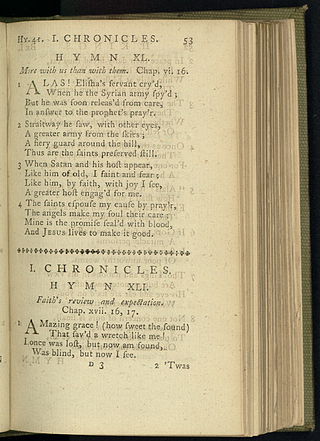
"Amazing Grace" is a Christian hymn published in 1779 with words written in 1772 by English Anglican clergyman and poet John Newton (1725–1807). It is an immensely popular hymn, particularly in the United States, where it is used for both religious and secular purposes.

Paul Laurence Dunbar was an American poet, novelist, and short story writer of the late 19th and early 20th centuries. Born in Dayton, Ohio, to parents who had been enslaved in Kentucky before the American Civil War, Dunbar began writing stories and verse when he was a child. He published his first poems at the age of 16 in a Dayton newspaper, and served as president of his high school's literary society.
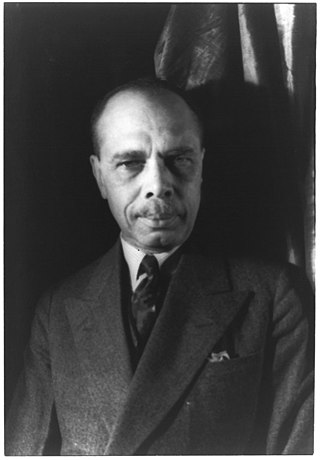
James Weldon Johnson was an American writer and civil rights activist. He was married to civil rights activist Grace Nail Johnson. Johnson was a leader of the National Association for the Advancement of Colored People (NAACP), where he started working in 1917. In 1920, he was the first African American to be chosen as executive secretary of the organization, effectively the operating officer. He served in that position from 1920 to 1930. Johnson established his reputation as a writer, and was known during the Harlem Renaissance for his poems, novel, and anthologies collecting both poems and spirituals of black culture. He wrote the lyrics for "Lift Every Voice and Sing", which later became known as the Negro National Anthem, the music being written by his younger brother, composer J. Rosamond Johnson.
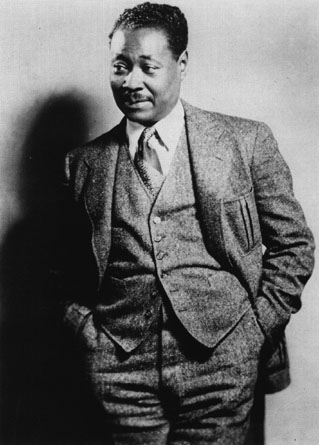
Festus Claudius "Claude" McKay OJ was a Jamaican-American writer and poet. He was a central figure in the Harlem Renaissance.
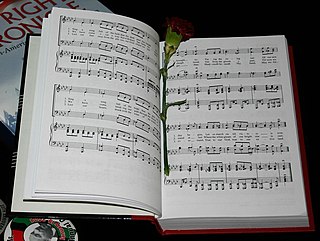
"Lift Every Voice and Sing" is a hymn with lyrics by James Weldon Johnson (1871–1938) and set to music by his brother, J. Rosamond Johnson (1873–1954). Written from the context of African Americans in the late 19th century, the hymn is a prayer of thanksgiving as well as a prayer for faithfulness and freedom, with imagery which evokes the biblical Exodus from slavery to the freedom of the "promised land."

Robert Silliman Hillyer was an American poet and professor of English literature. He won a Pulitzer Prize for poetry in 1934.

John Rosamond Johnson was an American composer and singer during the Harlem Renaissance. Born in Jacksonville, Florida, he had much of his career in New York City. Johnson is noted as the composer of the hymn "Lift Every Voice and Sing”. It was first performed live by 500 Black American students from the segregated Florida Baptist Academy, Jacksonville, Florida, in 1900. The song was published by Joseph W. Stern & Co., Manhattan, New York.
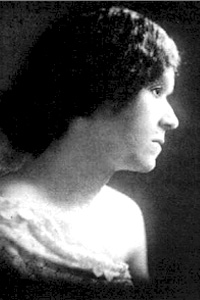
Georgia Blanche Douglas Camp Johnson, better known as Georgia Douglas Johnson, was a poet. She was one of the earliest female African American playwrights, and an important figure of the Harlem Renaissance.

Anne Bethel Spencer was an American poet, teacher, civil rights activist, librarian, and gardener. While a librarian at the all-black Dunbar High School, a position she held for 20 years, she supplemented the original three books by bringing others from her own collection at home. Though she lived outside New York City, the recognized center of the Harlem Renaissance, also known as the New Negro Movement, she was an important member of this group of intellectuals. She met Edward Spencer while attending Virginia Seminary in Lynchburg, Virginia. Following their marriage in 1901, the couple moved into a house he built at 1313 Pierce Street, where they raised a family and lived for the remainder of their lives.

God's Trombones: Seven Negro Sermons in Verse is a 1927 book of poems by James Weldon Johnson patterned after traditional African-American religious oratory. African-American scholars Henry Louis Gates and Cornel West have identified the collection as one of Johnson's two most notable works, the other being Autobiography of an Ex-Colored Man.

The Harlem Renaissance was an intellectual and cultural revival of African American music, dance, art, fashion, literature, theater, politics and scholarship centered in Harlem, Manhattan, New York City, spanning the 1920s and 1930s. At the time, it was known as the "New Negro Movement", named after The New Negro, a 1925 anthology edited by Alain Locke. The movement also included the new African American cultural expressions across the urban areas in the Northeast and Midwest United States affected by a renewed militancy in the general struggle for civil rights, combined with the Great Migration of African American workers fleeing the racist conditions of the Jim Crow Deep South, as Harlem was the final destination of the largest number of those who migrated north.

William Stanley Beaumont Braithwaite was an African-American writer, poet, literary critic, anthologist, and publisher. His work as a critic and anthologist was widely praised and important in the development of East Coast poetry styles in the early 20th century.

The Snow Hill Normal and Industrial Institute, also known as the Colored Industrial and Literary Institute of Snow Hill, was a historic African American school in Snow Hill, Alabama. It was founded in 1893 by Dr. William James Edwards, a graduate of Tuskegee University, and began in a one-room log cabin. The school grew over time to include a campus of 27 buildings, a staff of 35, and over 400 students. The school was operated as a private school for African-American children until Dr. Edward's retirement in 1924, when it became a public school operated by the State of Alabama. The school closed in 1973, after the desegregation of the Wilcox County school system. Out of the original 27 buildings, only eight survive today. They range in architectural style from Queen Anne to Craftsman and include the founder's home, five teachers' cottages, and the library. The National Snow Hill Alumni Association and the local Snow Hill Institute supporters determined to save the remaining structures in 1980. In June 1980, Dr. Edwards' granddaughter and Snow Hill alumna Consuela Lee Moorehead reopened the school as the Springtree/Snow Hill Institute for the Performing Arts and ran after-school and summer programs for local students. The art institute continued to run until 2003 when Moorehead's declining health caused her to close down the school. The school was listed on the National Register of Historic Places on February 24, 1995.
Snow Hill is an unincorporated community in Wilcox County, Alabama, United States. Snow Hill has one site included on the National Register of Historic Places, the Snow Hill Normal and Industrial Institute.

Fenton Johnson was an American poet, essayist, author of short stories, editor, and educator. Johnson came from a middle-class African-American family in Chicago, where he spent most of his career. His work is often included in anthologies of 20th-century poetry, and he is noted for early prose poetry. Author James Weldon Johnson called Fenton, "one of the first Negro revolutionary poets”. He is also considered a forerunner of the Harlem Renaissance.
Kemp Plummer was an American lawyer and politician. He was educated by George Wythe, once known as "the honest lawyer", and represented Warren County, North Carolina in the North Carolina House of Commons and later the North Carolina State Senate. He was a trustee of the University of North Carolina and grandfather of Kemp Plummer Battle.

Edward Smyth Jones was an African-American poet.
Caroling Dusk: An Anthology of Verse by Black Poets of the Twenties: Anthology of Black Verse is a 1927 poetry anthology that was edited by Countee Cullen. It has been republished at least three times, in 1955, 1974, and 1995 and included works by thirty-eight African-American poets, including Paul Laurence Dunbar, Langston Hughes, Georgia Douglas Johnson, James Weldon Johnson, and Claude McKay. The anthology also includes biographical sketches of the poets whose work is included in the book.
The Book of American Negro Poetry is a 1922 poetry anthology that was compiled by James Weldon Johnson. The first edition, published in 1922, was "the first of its kind ever published" and included the works of thirty-one poets. A second edition was released in 1931 with works by nine additional poets.

Joshua Henry Jones Jr. was a composer, poet, and novelist. He was photographed in 1923. His poem "To a Skull" was included in James Weldon Johnson's 1922 book The Book of American Negro Poetry. Robert Thomas Kerlin included him in his 1923 poetry anthology Negro Poets and Their Poems.
References
- ↑ "The Bookman: A Literary Journal". Dodd, Mead and Company. January 28, 1918 – via Google Books.
- ↑ Johnson, James Weldon (January 28, 1995). The Selected Writings of James Weldon Johnson: The New York Age editorials (1914-1923). Oxford University Press. ISBN 9780195076448 – via Google Books.